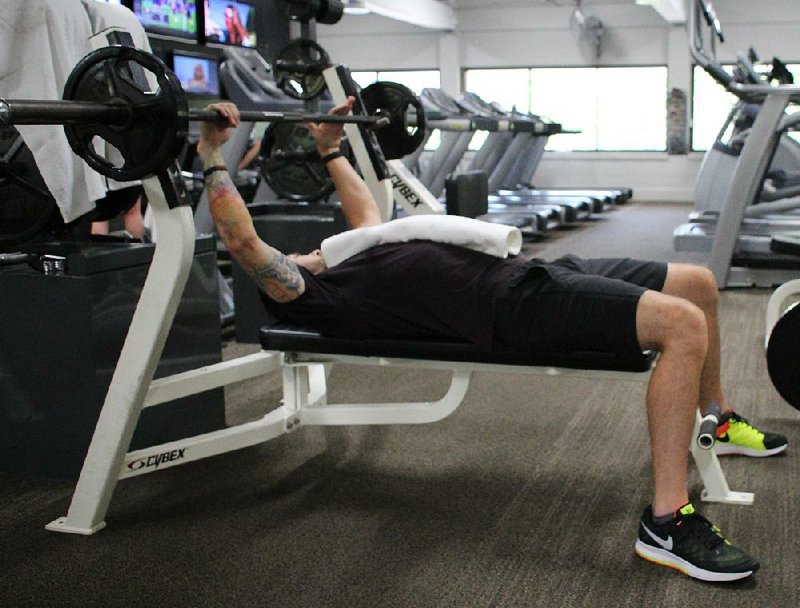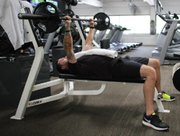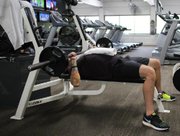Barbell bench press is the quintessential weight-training exercise. From the time young people set foot in their junior high or high school gym, they are challenged with performing it to the best of their abilities.
This week, I'll shed some light on this classic movement and will introduce a variation designed to change the focus of the exercise.
No matter which part of the country I'm in, I can walk into the free-weight section of almost any fitness center during peak hours on a Monday afternoon and find that most of the bench press setups are occupied. Why? What makes this exercise so popular?
The bench press challenges the shoulders, chest and triceps muscle groups with a simple movement that is easy to learn and easy to perform. In it's most familiar form, the bench press is a great exercise that can benefit anyone interested in strengthening those three muscle groups.
The Old School will certainly continue to use this exercise as a measuring stick for upper body strength evaluation.
While this grand old move will always hold a special place, exercise equipment has evolved so that barbell bench presses are no longer a necessary part of a comprehensive routine. Dumbbells, body-weight exercises and resistance machines have all become more popular. The proliferation of functional fitness activities will almost certainly begin to dilute the need for gyms to include multiple bench press stations for their members.
My advice to younger fitness professionals is to prescribe the bench press with the same frequency they would prescribe an overhead barbell press or standing barbell curl. It's a great way to build foundational upper body strength, but understand that it's not the only way.
That said, I've created a hybrid bench press for this week's feature exercise that changes the parameters of the traditional movement to challenge the triceps a bit more.
1. Load a bench press with light to medium resistance.
2. Select a foam roller with one side that is flat. If you can't find one, a folded towel will work.
3. Lie on the bench and position the foam roller in the center of your chest running from your neck to your waist with the flat side against your body.
4. Lift the bar off the rack and lower it as you would for a normal bench press.
5. Allow the bar to touch the foam roller, then forcefully press the bar back up and lock out both elbows by squeezing the triceps.
6. Perform two sets of 12 repetitions.
If you use a roller, this variation will eliminate some of the chest involvement in the exercise by limiting its range of motion by a third. The range of motion will be only a little less if you use a folded towel, but still, focus will shift more to the triceps.
It's also a much safer version of the traditional bench press because the shoulder position is far less extreme. I recommend adding this exercise toward the beginning of a triceps workout before moving on to rope extensions or triceps machines. Enjoy!
Matt Parrott has a doctorate in education (sport studies) and a master's in kinesiology and is certified by the American College of Sports Medicine.
ActiveStyle on 08/03/2015



